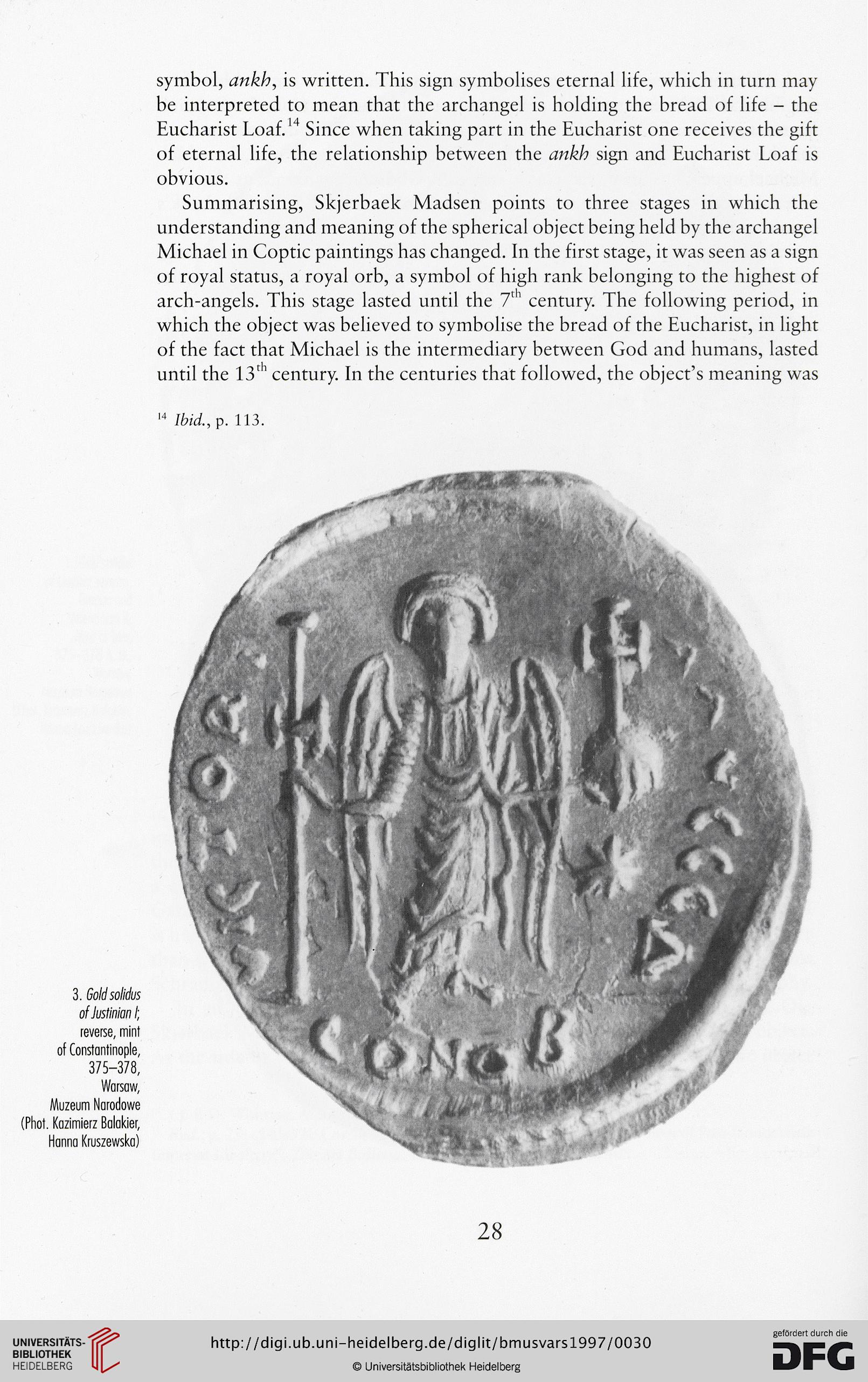symbol, ankh, is written. This sign symbolises eternal life, which in turn may
he interpreted to mean that the archangel is holding the bread of life - the
Eucharist Loaf.14 Since when taking part in the Eucharist one receives the gift
of eternal life, the relationship between the ankh sign and Eucharist Loaf is
obvious.
Summarising, Skjerbaek Madsen points to three stages in which the
understanding and meaning of the spherical object being held by the archangel
Michael in Coptic paintings has changed. In the first stage, it was seen as a sign
of royal status, a royal orb, a symbol of high rank belonging to the highest of
arch-angels. This stage lasted until the 7th century. The following period, in
which the object was believed to symbolise the bread of the Eucharist, in light
of the fact that Michael is the intermediary between God and humans, lasted
until the 13th century. In the centuries that followed, the object’s meaning was
14 Ibid., p. 113.
3. Gold solidus
of Justinian t,
reverse, mint
of Constantinople,
375-378,
Warsaw,
Muzeum Narodowe
(Phot. Kazimierz Balakier,
Hanna Kruszewska)
28
he interpreted to mean that the archangel is holding the bread of life - the
Eucharist Loaf.14 Since when taking part in the Eucharist one receives the gift
of eternal life, the relationship between the ankh sign and Eucharist Loaf is
obvious.
Summarising, Skjerbaek Madsen points to three stages in which the
understanding and meaning of the spherical object being held by the archangel
Michael in Coptic paintings has changed. In the first stage, it was seen as a sign
of royal status, a royal orb, a symbol of high rank belonging to the highest of
arch-angels. This stage lasted until the 7th century. The following period, in
which the object was believed to symbolise the bread of the Eucharist, in light
of the fact that Michael is the intermediary between God and humans, lasted
until the 13th century. In the centuries that followed, the object’s meaning was
14 Ibid., p. 113.
3. Gold solidus
of Justinian t,
reverse, mint
of Constantinople,
375-378,
Warsaw,
Muzeum Narodowe
(Phot. Kazimierz Balakier,
Hanna Kruszewska)
28




